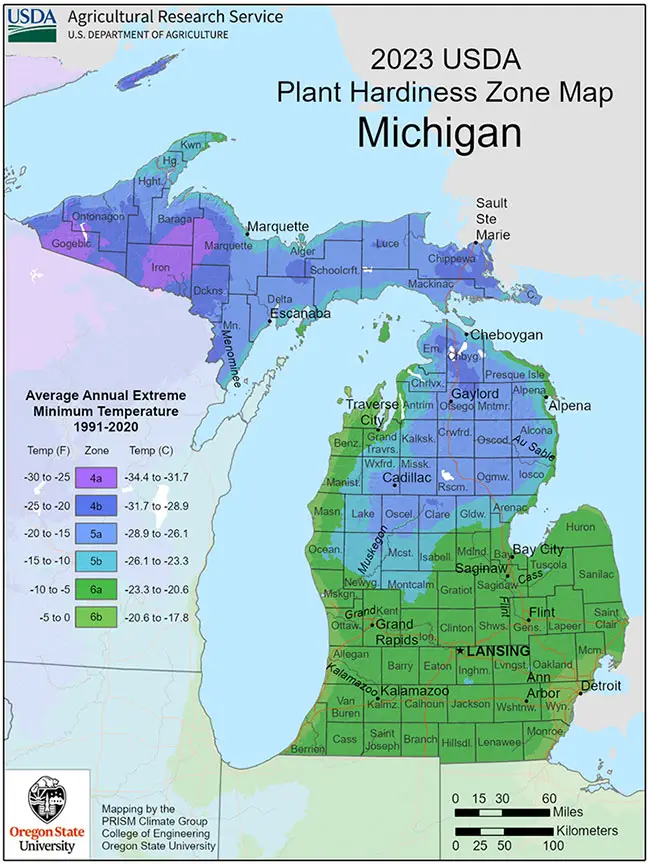
Cultivating palm trees in Michigan can be a daunting challenge due to the state’s predominantly cold climate. Michigan is characterized by a continental climate, which translates to scorching summers and extremely cold winters.
In July, the average temperatures typically span the range of 64 to 72°F (18 to 22°C). However, come January, the average temperatures plunge dramatically, ranging from 13 to -23°F (–5 to –11°C).
Temperature extremes in Michigan paint a vivid picture, with the highest ever recorded at a sweltering 112°F (44°C) and the lowest plummeting to a bone-chilling –51°F (–46°C).
Thunderstorms are relatively frequent in Michigan, occurring approximately 30 days annually, with about 17 tornadoes also making occasional appearances. Michigan’s USDA hardiness zones encompass the range of 4a to 6b.
Growing Palm Trees in Michigan
Given the state’s chilly climate, growing palm trees outdoors is an uphill battle. A more feasible approach would involve nurturing palm trees indoors within containers and giving them a taste of the great outdoors during the warmer summer months.
This way, you can enjoy the presence of palm trees in your garden for a few months each year. Some great indoor palms are:
- Areca Palm Tree – Zones 9a – 11 (20 to 25 F)
- Chinese Fan Palm Tree – Zones 8a – 11 (10 to 15 F)
- Kentia Palm Tree – Zones 9b – 11 (25 to 30 F)
- Lady Palm Tree – Zones 8b – 11 (15 to 20 F)
More Palm Trees»
Major Cities in Michigan
Alpena – Hardiness Zone 5b
Dearborn – Hardiness Zone 6a
Detroit – Hardiness Zone 6a
Kalamazoo – Hardiness Zone 5b
Lansing – Hardiness Zone 5b
Sault Ste Marie – Hardiness Zone 4a
Southfield – Hardiness Zone 6a
Sterling Heights – Hardiness Zone 6a
Warren – Hardiness Zone 6a
Westland – Hardiness Zone 6a
